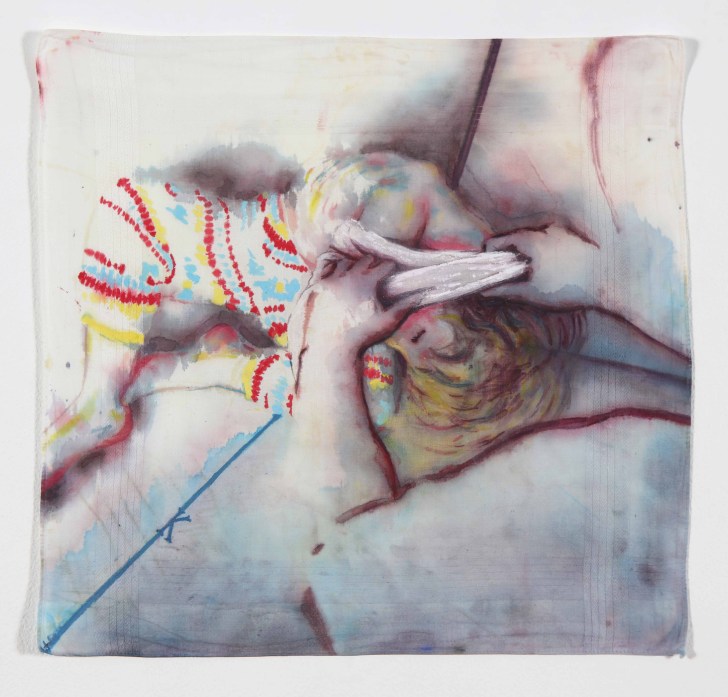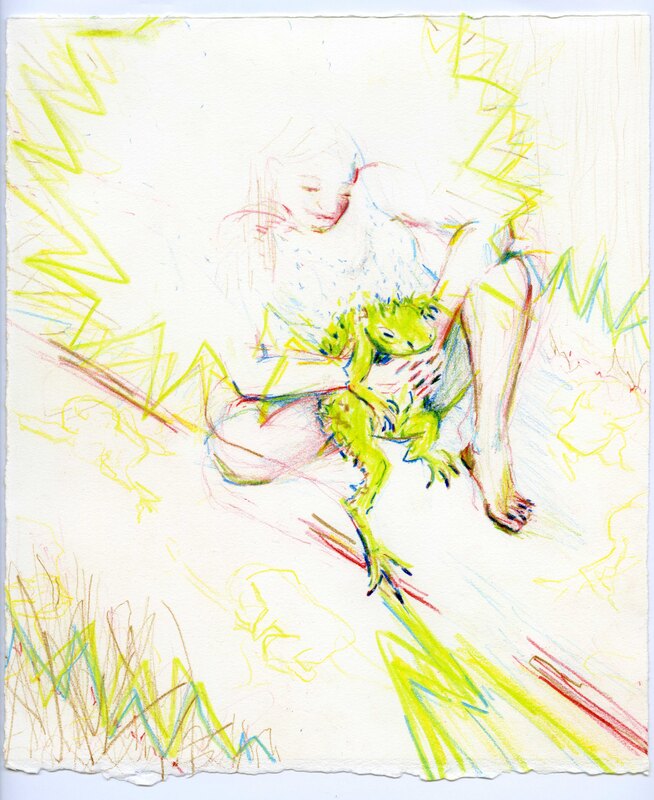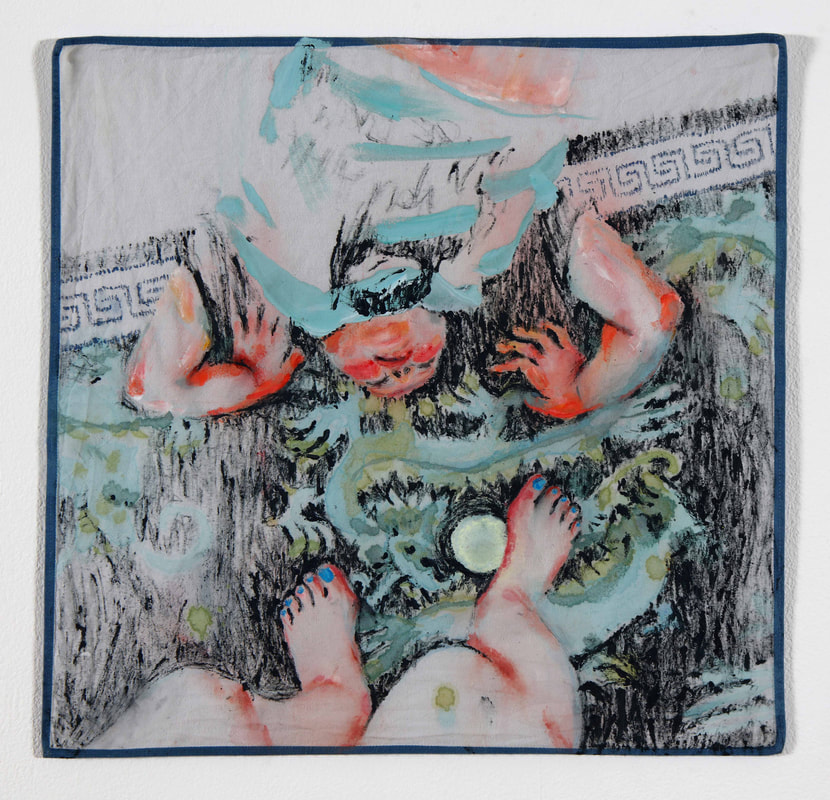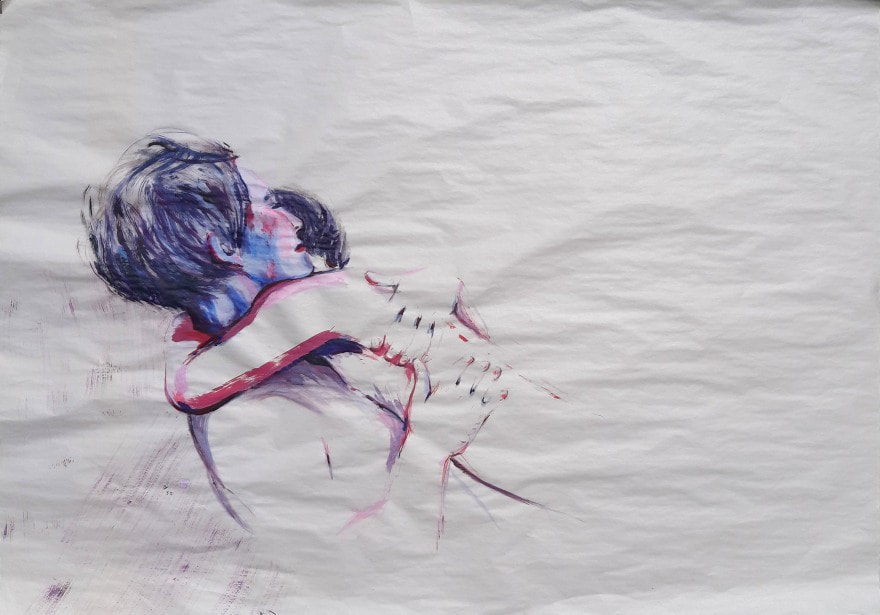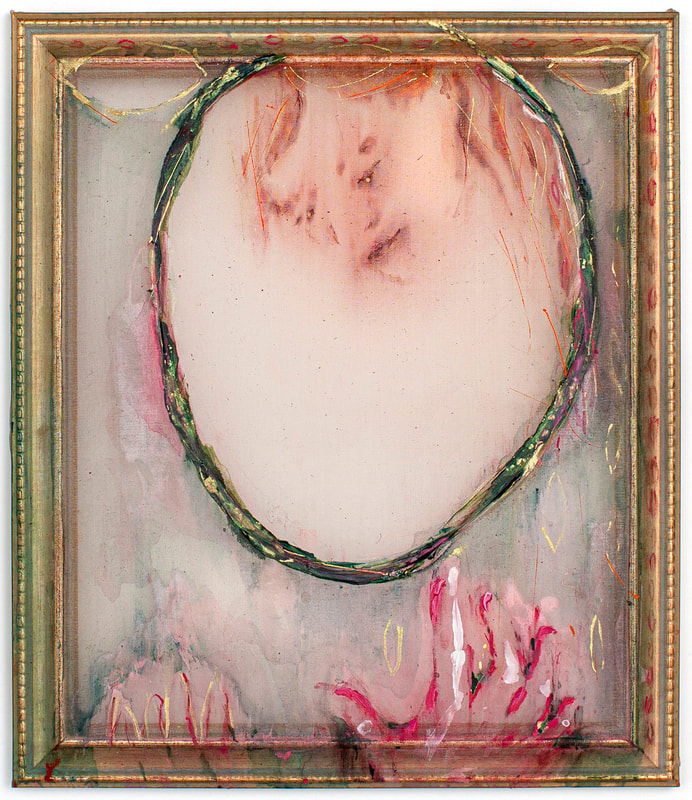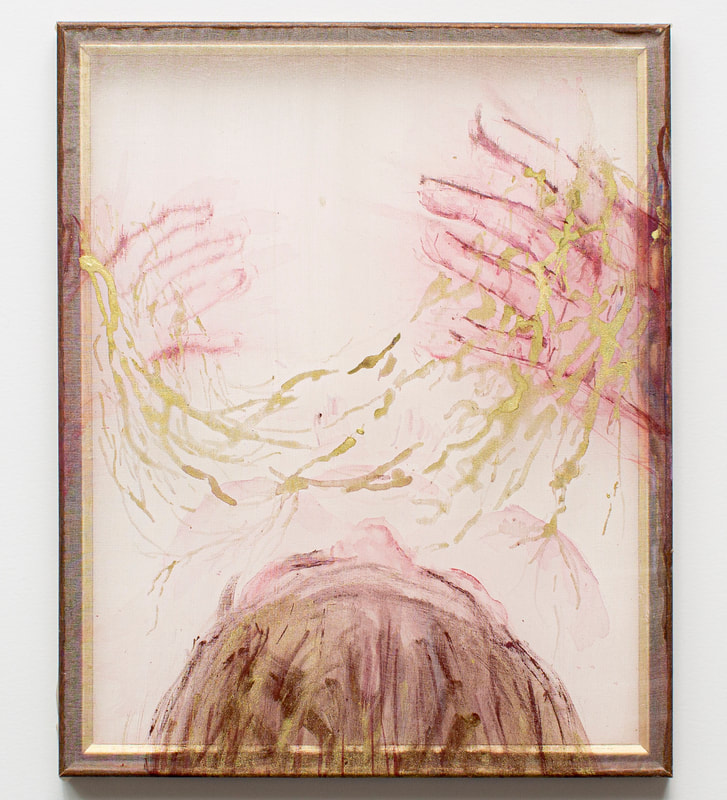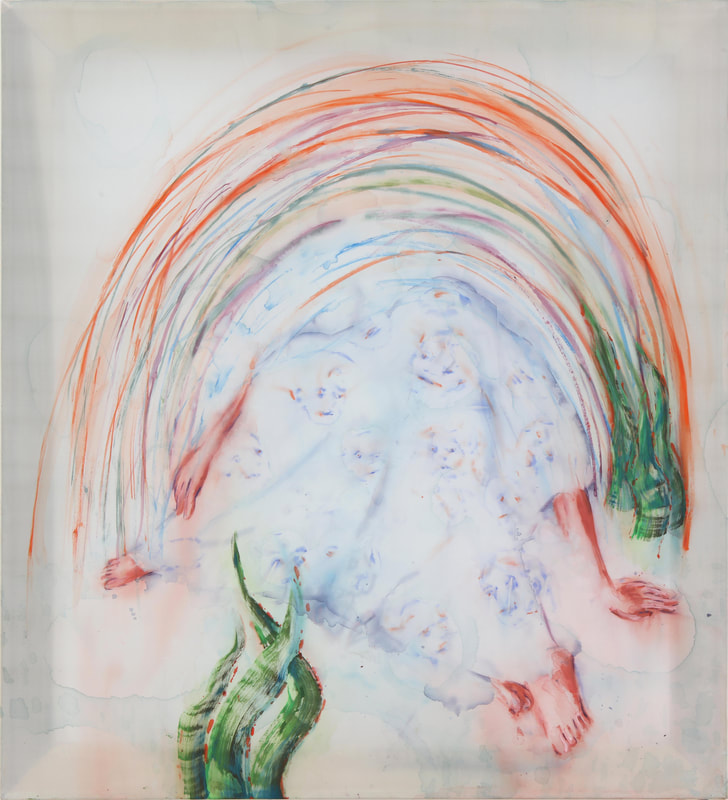Mindy Lee and Marco Cali
Your imagery reminds me somewhat of such writers as Angela Carter, Helen Oyeyemi or even the brothers Grimm. How do you think of yourself with respect to this tradition.
I think my work dwells in a tradition of peripheral edges and tipping points between one state and another. The Brothers Grimm tales are fresh in my mind from reading and rereading them to my son. Stories of folk law and mythology are seeded in a relatable reality, but soon seep into another peripheral, fantastical, and often nightmarish world. This erosion of boundaries allows the viewer or reader to explore scenarios and taboos more freely without quickly recoiling into automatic responses and returning to a familiar safe space.
Your imagery reminds me somewhat of such writers as Angela Carter, Helen Oyeyemi or even the brothers Grimm. How do you think of yourself with respect to this tradition.
I think my work dwells in a tradition of peripheral edges and tipping points between one state and another. The Brothers Grimm tales are fresh in my mind from reading and rereading them to my son. Stories of folk law and mythology are seeded in a relatable reality, but soon seep into another peripheral, fantastical, and often nightmarish world. This erosion of boundaries allows the viewer or reader to explore scenarios and taboos more freely without quickly recoiling into automatic responses and returning to a familiar safe space.
Rainbow taker, acrylic on cotton handkerchief, 2019
I see themes of Memories, dreams, melancholia even. A sense that you are questioning something lived as much as representing it. What do you make out this (my) observation?
I use autobiographical narratives in the work. Memories and dreams appear as themes alongside other internal narratives. My more recent work is made at a time of grieving, so the melancholia surfaces
Questioning something lived is key, I keep expanding on and then collapsing back to that sentence.
Questioning comes before and at the expense of representing it (the something lived). This moment was never fixed. Recalling it doesn’t fix it, it still shifts as we continually rewrite our memories from our present perspective. These lived things are still living, they are eaten into and overwritten with another, they bleed together and overlap. Questioning it returns it and keeps it alive. A rigid representation would lock it all down and squeeze the life out of it.
Questioning comes before and at the expense of representing it (the something lived). This moment was never fixed. Recalling it doesn’t fix it, it still shifts as we continually rewrite our memories from our present perspective. These lived things are still living, they are eaten into and overwritten with another, they bleed together and overlap. Questioning it returns it and keeps it alive. A rigid representation would lock it all down and squeeze the life out of it.
Sarah’s Toad, Pencil crayon on paper, 26 x 21cm, 2021
You seem to draw or paint in reaction to the supporting medium. Can you discuss the selection of the support. How does it begin? How does your thought process take you from that moment to the first mark making, colour selection, layout, overall mood of the piece to come. Do you play or 'live' with the supporting medium for a period of time or is it more spontaneous.
It all starts with very quick pencil drawings in my sketch pad, this is the go-to place to catch ideas. Sometimes a quick doodle can be enough to begin the work. At other times ideas need revisiting across days, weeks, months to be re-found and rewritten. I look to find the bare bones of a scenario. I think the sketchpad is the place for me to focus in to find an initial idea. Then, when I am painting or drawing I can let that go and explore finding and losing an image through the medium.
Medium choices depend on the needs of the image such as the scale, intimacy, solidity, range of visual language needed and the levels of immediacy. Dry drawing on paper is very intimate, instant and in focus, it retains all my thoughts and activity. Wet drawing or painting can be softer, with a greater difference in speed and application. There’s room for slippage as the mark changes after I apply it. Colour palettes are kept reduced, often to a few colours: something warm vs cool, or vibrant vs dull, fruitful vs rancid.
When making I prefer to use my material intuitively and loosely anticipate what might happen. I like surprises along the way. I can never go back to not knowing a medium, so I try and enjoy using the not knowing whilst it lasts.
I work responsively to evolve the drawing or painting. It shifts as it goes along and so the overall mood is not revealed until the end. I have tried bouncing through a finished drawing into a painting, but the discovery through making is diminished and I think the work looses something along the way.
Early Morning Power Play, Acrylic on Cotton handkerchief, 37.5 x 37 cm, 2019
The imagery seems contained within the frame of the supporting medium, trapped, brought into focus by it, yet fragmentary and other worldly. Degas or Francis Bacon, graphic novels even. To what extent is this accident or design. Are narrative possibilities within your work something you are actively working towards, or is it a by-product.
I am always very aware of how an image is contained in a frame. There are many approaches to this of course. I think that famously Francis Bacon uses the frame to pin and cage a body inside a space and Edgar Degas uses it more to compress and cut or crop the body in relation to the outer edge, the physical edge of the work. I also use these strategies; It is only when I acknowledge the frame that I feel I can operate within it. I can use it to react with and against. Silk allows the viewer to see the frame through the work. It is a fixed solid, on top of which a different, transient world can exist. Imagery can move around in relation to the frame, or creep over into a peripheral space on top of the frame, finding its way into our world.
Tight Squeeze, Acrylic, pencil and watercolour on newsprint, 64 x 90cm
You seem to construct the images from everyday life or moments somehow stitched together, unresolved, multi layered and with introspection. Is this a cathartic process for you? Where does the finished work exist for you? Is it with relation to an audience of some kind? Is there anyone you might feel less able to discuss a given work with...I guess I'm saying, are specific pieces a personal dialogue with specific individuals in your life.
You’ve explained my work really well, it does use introspection to stitch together multi-layered images of everyday moments.
The work can be a cathartic process, in allowing space for me to revisit events. Some pieces do come from very personal dialogue with specific individuals, who I have a great love and respect for. But it can make these pieces tricky to discuss. Especially as they start from a recognisable specific but are not contained there, like the fairy tales or folklaw. Elements are exaggerated or intensified; others are erased to allow the narrative to move beyond my own specific, individual moment.
The finished work exists when it has been seen by an external eye, so then it is existing in another’s mind. Narratives are left open ended to allow the viewer to implant their own interpretations onto the work. These different readings and responses, triggered from other people’s histories and mythologies keeps the work alive as it reaches out from the personal into a more collective experience, story or myth.
In a loop, Acrylic on silk, 29 x 25cm, 2021
Surrealism comes through for me. Dorothea Tanning on the one hand, also something about votive paintings, as in Catholic imagery via Frida Kahlo, on the other. Sorry to mention canonical artists who lived almost a century ago. What are your thoughts on the current moment, the life we (you?) experience with respect to that tradition. Is it even a valid starting point any more?
A surreal strangeness emerging from a familiar every day is definitely a part of my work.
I think that we are lucky as artists today because we no longer need a starting point or a singular path to navigate our own art historical family tree. We are free to reference and revive any part of history and re-present it as part our compressed, patchworked present, to compare how much or how little has changed.
I visited Dorothea Tannings exhibition at the Tate (2019) and saw some of Frida Kahlo’s votive paintings at the V&A (2018.) These votive paintings stayed with me (and were particularly on my mind when I drew Sarah’s Toad). I was drawn to the strange visual language of the votive paintings and their discordant, collaged depiction of an apparition in relation to the everyday, because they don’t comfortably co-exist, these two elements collide in a completely unfamiliar and surprising way.
Fingers Thread, Acrylic on silk, 27 x 22cm, 2021
It feels as if you are thinking through the process of working. Or rather, working through life's contradiction and condition through painting/drawing. The strokes feel light and have something of Gwen Jones in lightness, transient even. To what extent do you experiment with your mark making? Talk us thorough your choice of materials. How is this related to your themes and subject matter.
There is a lot of thinking space in Gwen Jones work and moments of reflective pause.
Thinking through the making and finding/losing/ responding/rejecting/rewriting moments all become part of my painting or drawings narrative. Jennifer Packer’s drawings sensitively navigate this and Auerbach uses these strategies’ quite differently.
I take a lot away as well as refraining from adding in, to keep narrative possibilities open. The way the mark is applied can be as important as what it represents.
It can reveal characters and creates a narrative. A slight sliding application can reveal a gentle, vaporous haunting, whereas heavy oozy lines bring more of a sluggish hot, visceral presence. Keeping things open allows space to move, air to breath, the eye travel into and around the work, breaking up forms. The incomplete or unfinished element leaves everything deliberately susceptible to change.
Material choices are active, like the framing of the work. My recent work explores emptiness and loss, so papers white, thick, blank, surface felt apt as a dominant empty ground. The pencil crayon drawings come from a more dreamlike, out of body experience, (where painted bodylines didn’t feel right). The pencil crayons feel like they’ve come from childhood and so I adopt some childlike depiction strategies’ to in part regress to a child’s eye view of the situation.
The precious, precarious, and transient nature of silk felt an appropriate surface to share preciousness moments of living with family ghosts. Gold has appeared in my frame and palette choices as a nod to histories use of gold to commemorate and elevate. Paint feels like it’s part of the body, it bleeds and stains and can be globular and visceral, so I find our bodies in this medium. But then I also flip things round and use the paint in contradiction to the subject matter, e.g. to undermine the figure and give more weighty certainty and force to the sky or a ‘rainbow’ so what we perceive to be ephemeral and solid it turned on its head.
Ancestral Den, Acrylic on silk, 90 x 82cm, 2021
To what extent are we seeing into your diary or life's journal. Or is it more a dialogue with other artists, curators....
You are seeing a selection of edited moments of my life reflected through my artist eyes. The work mirrors my experiences, but it is not a straight life journal. The moments I choose to share are born out of my personal and family events. My daily life, with its routine, osculates between my personal self and myself as an artist. I make and look at art, exploring other practices, see exhibitions, speak with other artists and curators, I also curate and teach art. As an artist I turn these investigative skills inwards to explore my personal self, searching for resonant moments to bring into in my work. They are filtered through my life experiences as an artist. So, my art comes from my life, it has parallels with my life, but it then stands apart from me. The work now has its own life.
